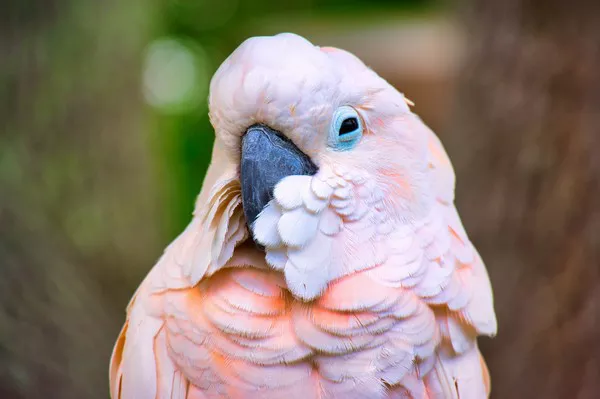Bearded dragons are fascinating pets that are popular among reptile enthusiasts. These reptiles are native to the arid regions of Australia and are well adapted to the harsh conditions of their natural environment. When it comes to caring for a bearded dragon, one of the most important aspects to consider is their substrate. A good substrate is crucial for the health and well-being of your bearded dragon. In this article, we will explore what makes a good substrate for bearded dragons and some of the best options available.
What is a substrate?
A substrate is the material that lines the bottom of your bearded dragon’s enclosure. It provides a surface for your pet to walk on, absorb moisture, and allows them to dig and burrow. A substrate can also affect the temperature and humidity levels in the enclosure, which are important factors to consider for the health of your bearded dragon.
What makes a good substrate for bearded dragons?
A good substrate for bearded dragons should be safe, hygienic, and provide a suitable environment for your pet. Here are some factors to consider when choosing a substrate:
- Safety: The substrate should be free of harmful chemicals, pesticides, and other toxins. It should also be non-toxic and digestible, as bearded dragons have a tendency to ingest substrate when they eat or hunt.
- Hygiene: The substrate should be easy to clean and replace. It should also be resistant to mold, fungus, and bacteria.
- Moisture retention: The substrate should retain moisture well to provide a humid environment for your bearded dragon. However, it should not be too damp, as this can lead to respiratory problems and skin infections.
- Digging and burrowing: Bearded dragons are natural burrowers and enjoy digging in substrate. A good substrate should allow them to exhibit this behavior safely.
- Heat retention: The substrate should not trap heat, as this can lead to overheating and dehydration. Instead, it should allow heat to dissipate to maintain a suitable temperature in the enclosure.
What are the best substrates for bearded dragons?
There are several types of substrates available for bearded dragons, each with their own advantages and disadvantages. Here are some of the most popular options:
- Reptile carpet: This is a synthetic carpet that provides a safe and hygienic substrate for bearded dragons. It is easy to clean and replace, and does not retain moisture or trap heat. However, it does not allow for digging or burrowing.
- Newspaper: This is a cheap and easy substrate that is safe for bearded dragons. It is also easy to clean and replace. However, it does not allow for digging or burrowing, and may not provide enough traction for your pet.
- Paper towels: This is a similar option to newspaper, but with better traction. It is also safe and easy to clean, but does not allow for digging or burrowing.
- Ceramic tiles: This is a durable and easy to clean substrate that does not retain moisture or trap heat. It also allows for digging and burrowing. However, it can be expensive and may not provide enough traction for your pet.
- Play sand: This is a natural substrate that allows for digging and burrowing. It also retains moisture well and provides a humid environment for your bearded dragon. However, it can be messy and may need to be replaced frequently.
- Coconut coir: This is a natural substrate made from coconut husks that retains moisture well and allows for digging and burrowing. It is also safe and easy to clean. However, it may retain heat and may need to be replaced frequently.
Choosing a substrate for your bearded dragon is an important decision that can affect their health and well-being. A good substrate should be safe, hygienic, and provide a suitable environment for your pet. When considering the best substrate for your bearded dragon, it is important to keep in mind their natural habitat and behavior.
The ideal substrate should allow for digging and burrowing, as bearded dragons are natural burrowers. It should also retain moisture well to provide a humid environment, but not too damp as this can lead to respiratory problems and skin infections. The substrate should also be easy to clean and replace to maintain a hygienic environment.
There are several options available for substrate, each with their own advantages and disadvantages. Synthetic substrates such as reptile carpet and paper towels are safe and easy to clean, but do not allow for digging or burrowing. Natural substrates such as play sand and coconut coir provide a more natural environment for your bearded dragon, but may need to be replaced frequently and can be messy.
When choosing a substrate, it is important to consider the needs and preferences of your individual bearded dragon. Some may prefer a natural substrate, while others may be more comfortable with a synthetic option. You should also consider any health concerns that your bearded dragon may have, such as respiratory issues, and choose a substrate that is suitable for their needs.
In addition to choosing a suitable substrate, it is important to maintain a suitable temperature and humidity level in the enclosure. Bearded dragons require a basking area with a temperature of around 95-105°F and a cooler area with a temperature of around 75-85°F. The enclosure should also have a humidity level of around 30-40%.
In conclusion, choosing a good substrate for your bearded dragon is an important aspect of their care. The substrate should be safe, hygienic, and provide a suitable environment for your pet. There are several options available, each with their own advantages and disadvantages. When choosing a substrate, it is important to consider the needs and preferences of your individual bearded dragon, as well as maintain a suitable temperature and humidity level in the enclosure. With the right substrate and care, your bearded dragon can thrive in their enclosure and provide you with years of enjoyment.


























